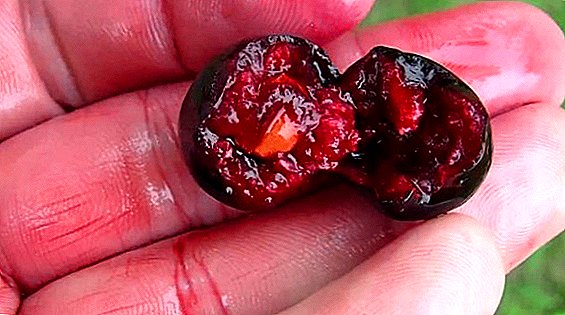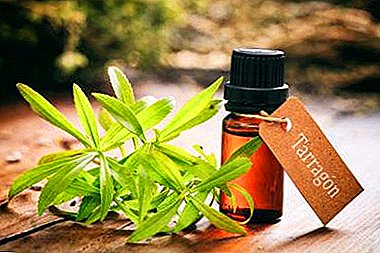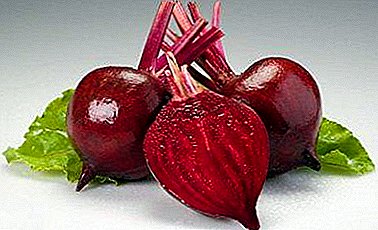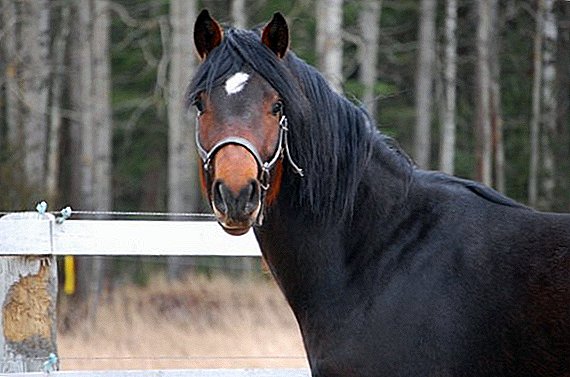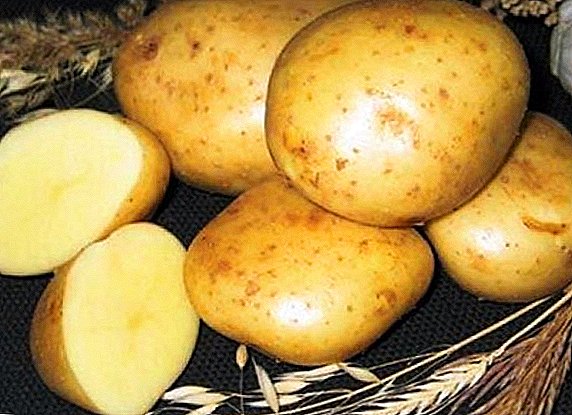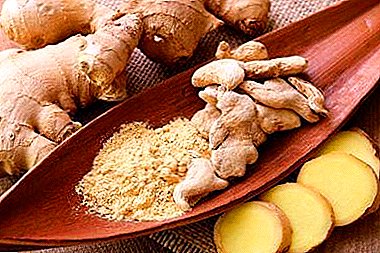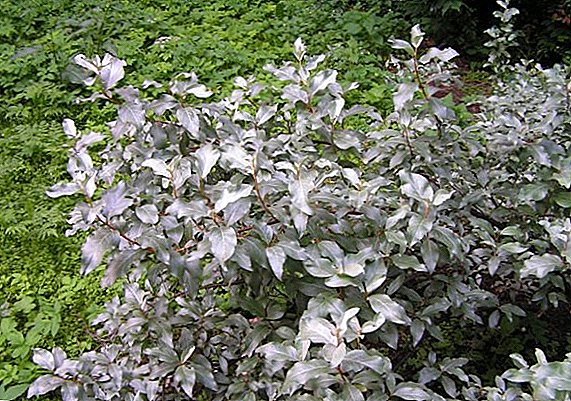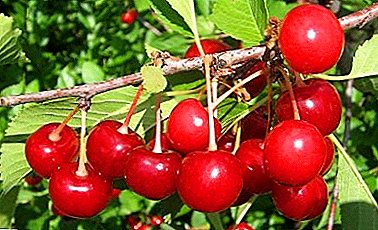
This cherry is very popular among breeders and gardeners due to its high yield and good adaptability to the temperate continental climate.
The Cherry of the same age easily tolerates arid hot summer and does not die in the winter during frosts, a full description of the variety is given later in the article.
Breeding history and breeding region
 Cherry Variety Same age was bred in Russia, in the city of Orlov at the fruit and berry station by the leading breeder A. F. Kolesnikova.
Cherry Variety Same age was bred in Russia, in the city of Orlov at the fruit and berry station by the leading breeder A. F. Kolesnikova.
The same age is the result of crossing two varieties: North Beauty No. 11 and Consumer Goods Black.
The new variety took over the best qualities from parental varieties.
From Beauty of the North № 11 inherited large sweet berries, good resistance to fungal disease coccomycosis.
Consumer black handed his frost resistance and high productivity.
Rossoshanskaya black, Ural ruby, Zhivitsa and Tamaris belong to high-yielding varieties.
Appearance of Cherry
Consider separately the appearance of the tree and fruit.
Tree
The same-age cherry grows in the form of a small tree: about 3 m tall. The crown of the cherry in shape resembles an inverted pyramid. The trunk and branches of the tree are covered with smooth, dark brown bark.
The leaves of this variety are broad, with a sharp spike at the end of the leaf. The surface of the leaves is wrinkled. In the sun, the leaves shine, acquire a rich green color.
Fruit
 Berries at the same age are medium in size. The weight of one fruit usually reaches 3.5 gr.
Berries at the same age are medium in size. The weight of one fruit usually reaches 3.5 gr.
Cherries look very appetizing: berries dense, claret. The pulp of the fruit is dense, red. Juice color - dark red.
Bone in the berries is smallIt is very easily removed from the pulp of the fruit.
Characteristic variety
Due to its taste and presentable appearance of berries, the same kind of fruit is considered universal. Universal varieties include Novella, Toy, Volochaevka.
Fruits of the variety meet the requirements For table varieties of cherries:
Berries look very appetizing.
The taste is estimated at 4.6 points: high sugar content of fruits (11.5%) more than covers their acidity (1.3%).
Berries are protected by a rather dense skin that is well transported.
Fruits are the same age for technical purposes. From the berries it turns out very tasty jam, stringy sweet liqueurs, dark red juices.
The same age brand is famous for its high yields. Annually, with the observance of the rules of agrotechnology, it is possible to collect up to 9 tons from 1 hectare, while one tree produces an average of 20 kg of berries.
The first harvest of young trees already give 3-4 year after planting.
 Cherry blossoms very beautifully at the end of May: Trees are almost completely covered with large white inflorescences that emit a very delicate aroma. Berries become ripe in the second half of July.
Cherry blossoms very beautifully at the end of May: Trees are almost completely covered with large white inflorescences that emit a very delicate aroma. Berries become ripe in the second half of July.
Frost resistance.
Grade Rovesnitsa medium resistant to frost. A big role is played by the choice of a place for a cherry. It is best to plant a tree so that from the north it is protected from strong winds by the walls of the house.
Great resistance to cold demonstrate Podbelskaya, Hope, generous and Tsarevna.
Cherry Same age is only half self-fertile: fruits are better tied if they get pollen from another, nearby growing cherry.
The harvest will be much larger if pollinating cherries coexist next to the same age: Turgenevka, Griot Ostgames, Vladimir.
These varieties of cherries bloom at the same time as the same age.
A photo





Planting and care
Proper planting of a tree is a serious stage on which the further growth and development of a cherry, its yield, depends.
Landing time. If the cherry grew in a container, then the best plant it in the fallwhen the leaves from the trees begin to fall off, but the night frosts have not come yet.
If the cherry grew in a container, then the best plant it in the fallwhen the leaves from the trees begin to fall off, but the night frosts have not come yet.
By this time, the plant has grown, accumulated nutrients and is preparing for the winter.
Planting time is better not to postpone: the earlier the cherry is planted, the more time the young tree will have to form a well-branched root system before the onset of frost.
In all other cases, seedlings planted in the springwhen landing Partially pruned branches.
Preparation of seedlings.
Saplings desirable soak in a water tank for six hours before planting. This will increase the likelihood of successful rooting of the plant.
It is important to ensure that the water-saturated roots of the plants do not have time to dry while you prepare the hole for planting. To avoid drying out, you can wrap the root system of the wood with a damp cloth.
Soil preparation and planting.
For planting a tree, it is necessary to dig a deep hole so that the cherry is firmly held in the ground, less tilted from the winds. In the hole at a distance of 7 cm from the trunk can dig a peg for better fixation of a young plant.
In the hole at a distance of 7 cm from the trunk can dig a peg for better fixation of a young plant.
Cherry is tied to a peg with a piece of cloth or a rope made of natural material.
It is best to fix the tree in two places: about half a meter from the ground and the top of the plant.
The pit must be wide enough so that the root system of the plant can be freely placed in it.
At the bottom of the pit is piled a hill of fertile land, cherry is placed on top of it, the roots are distributed on the sides of the hill.
It is very important not to bend the roots: they can be damaged, and the tree may not settle down. After laying the roots, the pit is covered with fertile soil, slightly trampling each level of the soil.
Around the tree is necessary form a small hillock and surround it with a holeso that when watering, the water falls to the roots, and does not spread on the surface of the earth.
When a plant is safely dug into the ground, it is necessary plenty of water. Water will help the earth to settle even more. If necessary, you will need to re-form a mound around the cherry.
A young tree will transfer the adaptation period more easily and will form a good root system if it is regularly sprayed.
Fertilizer. For better root formation when planting cherries, experts recommend laying at the bottom of the pit humus, 40 grams of superphosphate and 20 grams of potassium chloride.
For better root formation when planting cherries, experts recommend laying at the bottom of the pit humus, 40 grams of superphosphate and 20 grams of potassium chloride.
It is also useful to water the plant with Appin or Corneum - they will accelerate the growth and development of cherries.
An adult plant needs mineral fertilizers annually. In spring, during the flowering period, water is added superphosphate (30 g), ammonium nitrate (20 g), potassium (10 g) based on 1 square. m. soil.
In the fall, fertilizing the tree will also be useful; however, it must not contain nitrogen.
It is useful to add lime to the soil near the tree every five years: ground limestone or dolomite flour will do.
Crop.
Circumcision of fertile trees increases yields, tastes fruits, reduces the likelihood of various diseases.
When planting, the branches of a young tree are shortened by one third, so that the crown of the cherry grows in breadth.
An adult tree should be pruned annually in early spring, while observing the rules:
 You cannot prune more than one quarter of all branches of a tree. If you cut more, it will be a lot of stress for cherries. As a result, the yield may be significantly reduced or the tree may disappear.
You cannot prune more than one quarter of all branches of a tree. If you cut more, it will be a lot of stress for cherries. As a result, the yield may be significantly reduced or the tree may disappear.- The branches are cut off at the base, in no case should hemp be left.
- Be sure to remove the branches that fall to the ground.
- If the tree is too thick, then it must be thinned. On fewer branches, more fruits will grow due to better lighting, the likelihood of pests will decrease.
- Young shoots are also selectively removed. Leave you need only strong, it is desirable that they grow up.
- The height of the cherry must also be controlled: when the tree reaches three meters, it is annually cut from above.
REFERENCE: Near the cherries often grow root forest growth. Every year it must be removed, otherwise the tree will lose a lot of nutrients, greatly reduced yields.
Watering. An adult plant needs regular watering twice a day.
An adult plant needs regular watering twice a day.
Water should be enough to infiltrate the earthen room to the level of the placement of the root system.
Depending on the size of the tree, the volume can vary from one to two buckets during one irrigation.
IMPORTANT: Do not skip watering in the first two months of summer. It is during this period that fruits are formed on the tree and flower buds are laid for the next year.
Diseases and pests
Unfortunately, there are many diseases and pests that can greatly harm the tree, reduce or spoil the crop completely. Many diseases are easier to prevent than to cure.
Cherry Variety Same age good resistance to fungal disease - coccomycosis. The same sign is possessed by Lebedyanskaya, Novella and Malinovka.
But there is an even more complex fungal disease: monilioz. Spores of the fungus germinate in the pistils, violate the conductivity of the sap of the plant through the vessels. The result of moniliosis will be spoiled ovaries, flowers, young leaves.
 The branches of the plant will look burnt. Even the fruits are affected: the berries become ash-gray.
The branches of the plant will look burnt. Even the fruits are affected: the berries become ash-gray.
When the first signs of moniliosis appear, all affected areas should be removed and burned, while the healthy part of the shoot must also be shortened by 15 cm.
To prevent moniliosis, cherry is processed Bordeaux liquid (3%), iron sulphate (3%) or copper chlorine.
Pests.
- Aphid. Most often young trees suffer from this pest. To prevent the appearance of whole colonies capable of not only damaging the leaves, but also the harvest, cherries are treated with insecticides in early spring: oleocupriam or nitrafenom. Before flowering, additionally sprayed with metaphos, phosphamide or karbofos.
- Worms in the fruit. They appear as a result of the larvae laying off flies. Cherry flies die when cherry is treated with insecticides: Lightning, Spark, Aktar. It is necessary to spray the plant in two stages: the first coincides in time with the flowering of the acacia, at this time the air is already warm enough and the flies begin their livelihoods. Secondary treatment is carried out after two weeks.
- Cherries may also suffer from pests such as fruit mite, fruit and miner moths, unpaired silkworm, spiders. As a rule, it is timely to fight these pests. insecticide spraying in conjunction with the proper observance of agricultural engineering.
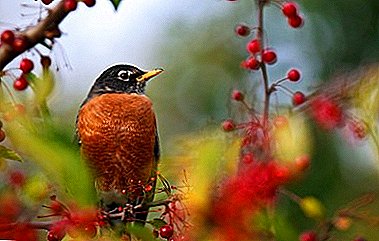 Birds often like to eat ripe fruits. You can try to scare the birds, hanging on the wood pieces of foil, bells. If the birds are brave, and still continue to spoil the harvest, the cover will save the cherry transparent film.
Birds often like to eat ripe fruits. You can try to scare the birds, hanging on the wood pieces of foil, bells. If the birds are brave, and still continue to spoil the harvest, the cover will save the cherry transparent film.
Cherries are very useful for humans, while they are easy to grow in our area.
Choose a good place for the tree, plant a good pollinator next to it, make preventive spraying on time and be able to enjoy a delicious jam, compote or scent all year round, being saturated with vitamins!
Watch the video about the fungal diseases of cherries and how to fight.


 You cannot prune more than one quarter of all branches of a tree. If you cut more, it will be a lot of stress for cherries. As a result, the yield may be significantly reduced or the tree may disappear.
You cannot prune more than one quarter of all branches of a tree. If you cut more, it will be a lot of stress for cherries. As a result, the yield may be significantly reduced or the tree may disappear. Birds often like to eat ripe fruits. You can try to scare the birds, hanging on the wood pieces of foil, bells. If the birds are brave, and still continue to spoil the harvest, the cover will save the cherry transparent film.
Birds often like to eat ripe fruits. You can try to scare the birds, hanging on the wood pieces of foil, bells. If the birds are brave, and still continue to spoil the harvest, the cover will save the cherry transparent film.